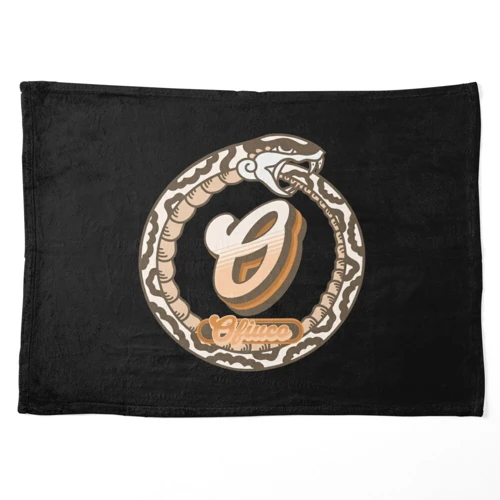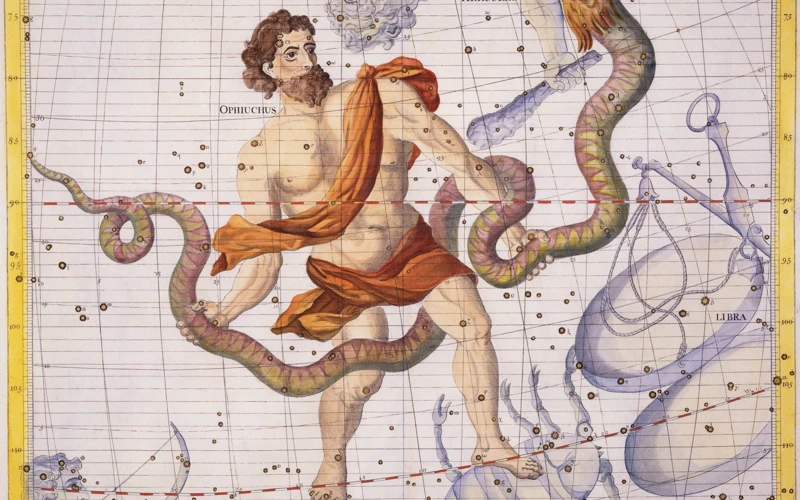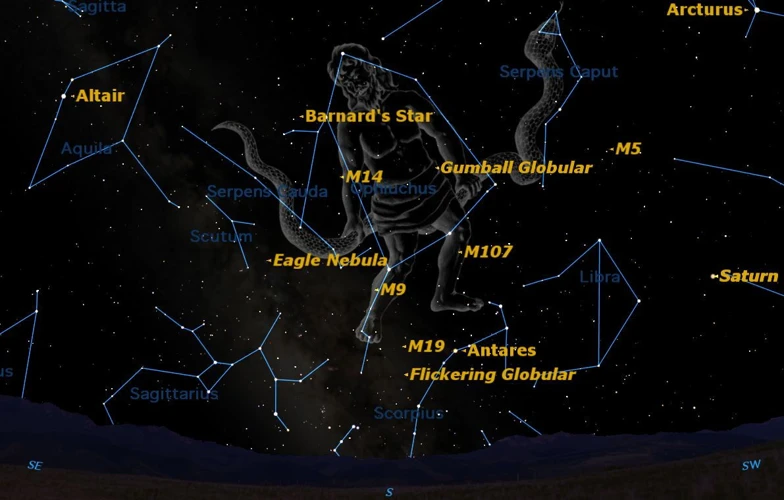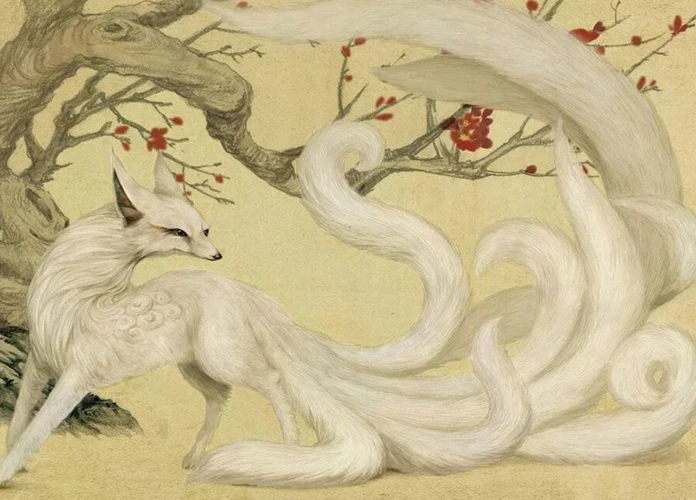The Rich Tapestry of Chinese Folklore
China is a land steeped in ancient traditions and captivating mythology. Its folklore is a treasure trove of mythical creatures, each with its own unique story and significance. These creatures, depicted in ancient texts, artwork, and folklore, continue to captivate and intrigue people around the world. From majestic dragons and auspicious phoenixes to mystical unicorns and wise tortoises, Chinese folklore is filled with an enchanting array of creatures. In this article, we will explore the mythical creatures of Chinese folklore, delving into their origins, symbolism, and fascinating legends. Join us on this journey into the realm of fantasy and wonder as we uncover the mysteries of these extraordinary beings.
Contents
- The Four Magical Creatures
- Other Fascinating Creatures
- Legendary Mythical Creatures
- Conclusion
- Frequently Asked Questions
- References
-
Frequently Asked Questions
- 1. Who are the Four Magical Creatures?
- 2. What is the significance of the Dragon?
- 3. What does the Phoenix symbolize?
- 4. What is the Qilin?
- 5. What is the significance of the Tortoise?
- 6. What is the Pixiu?
- 7. What is the Nian?
- 8. Who is the Hou?
- 9. What is the Bai Ze?
- 10. What is a Nine-tailed Fox?
- References
- Read More
The Rich Tapestry of Chinese Folklore
Chinese folklore is a rich tapestry woven over centuries, enthralling generations with its magical tales and captivating characters. This intricate tapestry is filled with mythical creatures that have become cherished figures in Chinese culture and beyond. From mighty dragons soaring through the heavens to majestic phoenixes rising from the ashes, these creatures hold deep symbolism and profound meaning. The Qilin, often referred to as the “Chinese unicorn,” is a mystical creature associated with good fortune and prosperity. Its appearance, resembling a combination of various animals such as a dragon, deer, and lion, symbolizes harmony and balance. Another notable creature is the Tortoise, an ancient ruler of wisdom and longevity. With its sturdy shell and wise countenance, the Tortoise embodies the importance of patience, endurance, and the pursuit of knowledge. These creatures and many others found in Chinese folklore reflect the cultural beliefs, values, and aspirations of the Chinese people. It is through these mythical beings that the rich tapestry of Chinese folklore comes alive, enchanting and inspiring all who immerse themselves in its stories and legends.
The Four Magical Creatures

In the realm of Chinese folklore, four mystical creatures hold a place of great significance and power. The Dragon reigns as the guardian of heaven and earth, revered for its strength, wisdom, and auspicious nature. With its mythical ability to control water, the Dragon has long been associated with rainfall and plentiful harvests. The Phoenix, a symbol of prosperity and rebirth, represents the epitome of grace and beauty. Its vibrant plumage and majestic presence embody good fortune and new beginnings. The Qilin, often referred to as the “Chinese unicorn,” captivates with its otherworldly appearance and gentle demeanor. This mystical creature is believed to bring blessings and harmony wherever it goes. Lastly, the Tortoise, the ancient ruler of wisdom, emphasizes the importance of patience, longevity, and the pursuit of knowledge. These four magical creatures serve as iconic symbols of Chinese culture and mythology, each carrying profound significance and capturing the imagination of those who encounter their legends.
The Dragon: Guardian of Heaven and Earth
In Chinese folklore, the Dragon is an awe-inspiring creature that holds immense power and significance. Often depicted as a colossal serpent-like creature with scales, a fierce gaze, and the ability to fly, the Dragon is seen as the ultimate guardian of heaven and earth. Revered as a symbol of strength, wisdom, and imperial authority, it is believed that the Dragon has the ability to control the forces of nature. The Dragon’s association with water makes it a potent symbol of fertility and abundance. It is also closely linked to the emperor, representing his divine right to rule and protect the kingdom. The Dragon’s presence can be found in various aspects of Chinese culture, from ancient architecture and decorative art to traditional celebrations such as the Dragon Boat Festival. Legends and myths surrounding the Dragon abound, captivating the imaginations of all who hear them. One famous tale is that of the Dragon’s Gate, where it is believed that carp swimming upstream and successfully leaping over the gate would transform into powerful dragons. This story symbolizes perseverance, ambition, and the potential for greatness. The Dragon’s mythical status endures to this day, captivating people around the world with its majestic presence and inspiring tales of its extraordinary powers.
The Phoenix: Symbol of Prosperity and Rebirth
In Chinese folklore, the Phoenix is revered as a magnificent bird symbolizing prosperity, rebirth, and eternal life. Known as Fenghuang, this mythical creature holds a significant place in Chinese culture and represents yang energy, the feminine complement to the masculine dragon. With its resplendent plumage in vibrant shades of red, orange, and gold, the Phoenix radiates beauty and grace. Legends tell tales of the Phoenix’s ability to bring good fortune and prosperity to those who encounter it. Its appearance is often associated with important events, such as the birth of exceptional rulers or the start of a new era. The Phoenix is also believed to possess the power of rebirth, rising from the ashes in a cyclic pattern. This symbolism resonates with the concept of life’s continuous renewal and the triumph over adversity. The Phoenix’s captivating presence in Chinese mythology exemplifies the enduring fascination with the mystical and the profound connection between nature, spirituality, and human existence. (Learn more about mystical meanings of planetary alignments.)
The Qilin: The Mystical Unicorn
The Qilin, also known as the “Chinese unicorn,” is a mythical creature that holds a special place in Chinese folklore. Its existence has been documented in ancient texts and depicted in various forms of art throughout history. The Qilin is often portrayed as a magnificent creature with the body of a deer, the tail of an ox, hooves like a horse, and a scaled body that shimmers with a divine glow. This unique combination of features represents the harmonious union of different animals, symbolizing the ideal balance of Yin and Yang energies.
In Chinese mythology, the appearance of a Qilin is considered an auspicious event, often associated with the arrival of a wise and virtuous ruler or the birth of a great sage. It is believed that the Qilin brings blessings, prosperity, and good fortune to those who encounter it. Legends tell of the Qilin being a benevolent creature, offering protection and guidance to those in need.
The symbolism of the Qilin goes beyond its physical attributes. It embodies the virtues of righteousness, benevolence, and justice, making it a symbol of morality and integrity in Chinese culture. The Qilin’s gentle nature and graceful presence serve as a reminder to lead a life filled with compassion and honor.
The Qilin’s popularity has transcended Chinese borders, and it has become a beloved mythical creature in various other East Asian cultures as well. Its influence can be seen in art, literature, and even modern entertainment. The Qilin’s presence in popular culture has further solidified its status as an iconic symbol of good fortune and mystical beauty.
The Qilin stands as a remarkable creature in Chinese folklore, captivating imaginations with its mystical allure. Its significance as a symbol of prosperity, balance, and nobility has made it an enduring part of Chinese culture. The Qilin’s legacy continues to inspire awe and admiration, reminding us of the power of mythical creatures to evoke wonder and instill values of wisdom and virtue.
The Tortoise: The Ancient Ruler of Wisdom
The Tortoise, known as one of the ancient rulers of wisdom in Chinese folklore, holds a revered place in the realms of mythology and symbolism. Often depicted as an old and wise creature, the Tortoise is associated with longevity, knowledge, and profound insight. In Chinese culture, it is believed that the Tortoise possesses the secrets of the universe and carries the burden of cosmic wisdom on its sturdy shell. This creature is believed to have witnessed the rise and fall of civilizations, making it a custodian of ancient knowledge. With its slow and deliberate movements, the Tortoise reminds us of the importance of patience and contemplation in seeking wisdom and understanding. In Chinese art and literature, the Tortoise is often depicted alongside the mythical creature known as the Qilin, symbolizing the harmony between wisdom and good fortune. The story of the Tortoise’s association with wisdom is beautifully captured in the legend of the “Giant Tortoise of the North Star,” which reveals how this ancient creature ascended to the heavens and became an immortal symbol of enlightenment. So next time you encounter the image of a wise Tortoise, remember the age-old wisdom and profound insights it represents, reminding us to embrace a contemplative approach to life’s mysteries and the pursuit of knowledge.
Other Fascinating Creatures

In addition to the four magical creatures mentioned earlier, Chinese folklore brims with a plethora of other fascinating beings. One such creature is the Pixiu, a mythical beast known for its ability to attract wealth and prosperity. Often depicted as a hybrid of a lion and a dragon, Pixiu is believed to have the power to ward off evil spirits and bring good fortune to its owner. Another captivating creature is the Nian, a fearsome monster associated with the Chinese New Year. According to legend, the Nian would wreak havoc on villages, but people discovered that the creature was afraid of loud noises, red color, and firecrackers. Since then, these traditions are still practiced during the festive celebrations. The Hou, known as the Monkey King’s comrade, is a mischievous and loyal creature from the classic novel “Journey to the West.” With its agile nature and incredible strength, the Hou adds an element of humor and excitement to the mythical world of Chinese folklore. Lastly, we have the Bai Ze, a knowledgeable creature that imparts wisdom and knowledge to those who seek it. Its appearance, with a body resembling a tiger, a tail like an ox, and a head filled with eyes, is both intriguing and awe-inspiring. These fascinating creatures add depth and intrigue to the realm of Chinese folklore, captivating the imaginations of people across the globe.
The Pixiu: The Wealth-Attracting Beast
The Pixiu is a fascinating creature from Chinese folklore known for its ability to attract wealth and good fortune. This mythical beast is often depicted with the body of a lion and the wings of a dragon, symbolizing its powerful and auspicious nature. It is believed that the Pixiu has an insatiable appetite for gold, silver, and other precious treasures, which it then guards and protects, ensuring the prosperity of its owner. In Chinese culture, many people keep statues or figurines of the Pixiu in their homes or workplaces to invite wealth and abundance into their lives. According to legend, the Pixiu only brings in wealth and does not permit it to leave, making it a revered symbol of financial prosperity and abundance. This creature is also associated with protection against negative energies and evil spirits. Its majestic appearance and its association with wealth make the Pixiu a popular and highly regarded figure in Chinese folklore and culture. Whether one believes in its mystical powers or not, the Pixiu serves as a reminder of the importance of attracting positive energy and seeking abundance in all aspects of life.
The Nian: The Fearsome New Year Monster
The Nian is a fearsome monster that plays a significant role in Chinese New Year traditions. According to legend, this ferocious creature would emerge from the depths of the sea on the eve of the New Year to wreak havoc on villages and devour livestock and crops. Its name, “Nian,” derived from the Chinese word for “year,” symbolizes the monster’s association with the turning of the lunar calendar. To protect themselves from this dreaded beast, people would decorate their homes with vibrant red colors and loud noises such as firecrackers and drums – believed to ward off evil spirits. These customs have carried on for centuries and are still practiced today during the festive celebrations. The story of the Nian serves as a reminder of the resilience and ingenuity of the Chinese people, as they came together to outsmart and overcome this formidable monster. With each passing year, the Nian legend lives on, reminding people to embrace the spirit of unity and hope as they welcome the new year.Red giants are stars that have exhausted their nuclear fuel and expanded to a larger size, emitting a reddish glow. Though unrelated to the Nian, these celestial giants share a common theme of transformation and change, much like the transition from one lunar year to the next. Just as the Nian symbolizes the end of one year and the beginning of another, red giants represent the final stages of stellar evolution, marking the end of a star’s life cycle. It is fascinating to draw connections between Chinese folklore and the wonders of the universe, highlighting the diverse range of influences that shape our understanding of the world.
The Hou: The Monkey King’s Comrade
In Chinese folklore, the Hou is a mystical creature that plays a significant role alongside the legendary Monkey King, Sun Wukong. Also known as the “Monkey King’s Comrade,” the Hou is a loyal and mischievous creature often portrayed as an ape-like being with incredible strength and agility. The Hou is believed to possess magical powers, including the ability to transform into various forms and sizes. This clever creature is often depicted as a quick-thinker, assisting the Monkey King on his daring adventures and using its wit to outsmart adversaries. Its mischievous nature adds a light-hearted touch to the epic tales of the Monkey King, bringing humor and excitement to the folklore. The Hou’s companionship with the Monkey King illustrates the value of teamwork, friendship, and the power of unity in overcoming challenges. Together, they embody bravery, resourcefulness, and the indomitable spirit of the heroes they represent in Chinese folklore. To explore more about intriguing characters like the Monkey King, you can read about the passionate and perceptive traits of the zodiac sign Leo, often associated with those born under the Monkey zodiac sign.
The Bai Ze: The Knowledge-bestowing Creature
In the vast realm of Chinese folklore, the Bai Ze stands out as a fascinating and extraordinary creature. Known as the “knowledge-bestowing creature,” the Bai Ze is believed to possess immense wisdom and insight. This mythical creature takes the form of a bizarre hybrid, with the body of a beast and the face of a human. It is said that the Bai Ze has the ability to communicate with humans and impart valuable knowledge. According to ancient texts, the Bai Ze has a vast repository of information about the world, including detailed descriptions of hundreds of supernatural beings, most of which are obscure and unknown to humans. Legend has it that Emperor Taizong of the Tang Dynasty encountered a Bai Ze in his dreams, which revealed to him a compendium of supernatural creatures and their attributes. This encounter inspired the compilation of the Classic of Mountains and Seas, a renowned Chinese text that chronicles various mythical beings. The Bai Ze’s role as a knowledge-bestowing creature emphasizes the importance of seeking wisdom and understanding in one’s journey through life. It symbolizes the pursuit of knowledge and the endless possibilities that come from expanding one’s understanding of the world. The Bai Ze continues to captivate imaginations, reminding us of the power of wisdom and the never-ending quest for knowledge.
Legendary Mythical Creatures

In the realm of Chinese folklore, legendary mythical creatures reign supreme, captivating the imagination with their extraordinary abilities and captivating stories. One such creature is the Nine-tailed Fox, an enchanting and mischievous seductress capable of transforming into a beautiful woman. Known for her ability to charm and bewitch, the Nine-tailed Fox weaves her way into the hearts of unsuspecting victims, leaving them under her spell. Another remarkable creature is the Zhulong, the divine torch dragon, who is said to control the sun and moon with its fiery presence. This majestic creature brings light and warmth to the world, symbolizing power and enlightenment. The Jiangshi, also known as the hopping vampire, is a fearsome creature that feeds on the life force of the living. Bound by mystical rituals and talismans, the Jiangshi hops its way through the night, a terrifying sight for those who cross its path. Lastly, we have the Baku, the dream eater, a mythical creature known for devouring nightmares and protecting sleepers from evil spirits. With its elephantine body and tiger-like features, the Baku is a guardian of peaceful slumber, providing solace and tranquility to those in need. These legendary mythical creatures weave tales of wonder, danger, and transformation, illustrating the boundless depths of Chinese folklore.
The Nine-tailed Fox: The Mischievous Seductress
In Chinese folklore, the Nine-tailed Fox is a captivating and enigmatic creature known for its seductive allure and mischievous nature. This mythical fox possesses nine tails, each representing its immense power and wisdom. Legends depict the Nine-tailed Fox as a shape-shifter, capable of transforming into a beautiful woman to tempt unsuspecting mortals. It is believed that encountering a Nine-tailed Fox brings both blessings and curses. On one hand, it is said to have the ability to bestow immense wealth and good fortune upon those it favors. On the other hand, it is also associated with chaos and destruction, capable of wreaking havoc on those who cross its path. The Nine-tailed Fox’s seductive nature has been the inspiration for numerous tales of love, tragedy, and deception in Chinese literature and art. Its ability to manipulate and enchant has served as a cautionary tale throughout history. Despite its deceptive and mischievous nature, the Nine-tailed Fox is also seen as a symbol of intelligence, freedom, and ambition. This enchanting creature embodies the complex dualities of human nature and continues to captivate imaginations with its alluring charm and mysterious powers.
The Zhulong: The Divine Torch Dragon
In the realm of Chinese mythology, the Zhulong reigns as a fascinating and powerful creature known for its divine illumination. The word “Zhulong” translates to “torch dragon,” which aptly captures its essence as a dragon that possesses the ability to emit brilliant light. Unlike traditional dragons, the Zhulong does not exhale fire, but instead radiates a radiant glow from its entire body. This celestial dragon is often depicted with a long and sinuous body covered in shimmering scales that emit golden or multicolored light. Legends tell of how the Zhulong took its place in the sky, acting as a torch or guiding light for celestial bodies during the night. It is believed to be responsible for lighting up the path of the sun, moon, and stars, ensuring that they traverse the heavens without stumbling. The Zhulong’s luminous presence represents not only its power but also its role as a celestial guardian, illuminating the world and bringing hope and enlightenment to those who gaze upon it. The mythical creature holds significance in Chinese culture, symbolizing guidance, enlightenment, and the eternal cycle of day and night. While the Zhulong’s stories may be steeped in ancient lore, its captivating portrayal as a divine torch dragon continues to fascinate and inspire both in Chinese folklore and in the realm of imagination.
The Jiangshi: The Hopping Vampire
The Jiangshi, also known as the hopping vampire, is a unique and eerie creature deeply rooted in Chinese folklore. Often depicted as a reanimated corpse, the Jiangshi is said to be brought to life by dark forces or the improper burial of a deceased individual. This supernatural entity is characterized by its stiff posture, outstretched arms, and its peculiar method of movement—hopping. Legend has it that the Jiangshi hops because its stiff limbs prevent it from walking normally, adding to its unsettling and ghostly appearance.
One of the most fascinating aspects of the Jiangshi’s mythology is its resemblance to both a vampire and a zombie. Like a vampire, the Jiangshi feeds on the life essence, or qi, of living beings to sustain itself. It is believed to drain the vitality of its victims, leaving them weak and lifeless. Similarly, the Jiangshi shares similarities with zombies, as it possesses a willless and mindless nature, acting solely on instinct.
Traditionally, the Jiangshi is depicted wearing the tattered garments of a Qing Dynasty official, reflecting its origins from the dynastic era. The Jiangshi is also commonly shown with long white hair, long nails, and a greenish hue to its skin, symbolizing decay and death. To further emphasize its supernatural nature, dark magic symbols may be painted on its forehead, chest, or hands.
According to Chinese folklore, the Jiangshi is repelled by various methods and symbols. Taoist priests are known to use talismans, spells, and ritualistic chanting to subdue or banish these creatures. Items such as mirrors and rice, believed to possess spiritual properties, are used to obstruct or distract the Jiangshi, rendering it immobilized.
The Jiangshi’s portrayal in popular culture has also had a significant impact on its perception. It has often been depicted in movies, television shows, and literature, both in China and internationally. The image of the Jiangshi as a hopping, menacing creature has become deeply ingrained in the collective imagination.
The Jiangshi stands as a unique and chilling character in Chinese folklore, captivating audiences with its blend of vampire and zombie attributes. Its hopping movements, bloodsucking tendencies, and distinctive appearance make it an icon of supernatural horror. Whether seen as a cautionary tale, a representation of the fear of death, or simply an entertaining element of folklore, the Jiangshi continues to intrigue and spook those who dare to delve into the depths of Chinese mythical creatures.
The Baku: The Dream Eater
Among the intriguing mythical creatures of Chinese folklore is the Baku, a mystical being known as the Dream Eater. The Baku is said to have the ability to devour nightmares and protect sleepers from the terrors of their dreams. Its appearance is a fusion of different animals, with a body resembling that of a lion, an elephant’s trunk, and powerful claws. Legend has it that if a person is plagued by recurring bad dreams, they can call upon the Baku to come and consume their nightmares, granting them peaceful sleep. However, there is a word of caution associated with invoking the Baku’s powers. It is believed that once summoned, the Baku must devour not only the bad dreams but also the individual’s good dreams, leaving them with a sense of emptiness upon waking. This belief has given rise to the saying, “Be careful what you wish for, as you may lose something precious in the process.” The Baku’s role as a dream eater has made it both revered and feared in Chinese folklore, embodying the delicate balance between dreams and reality. Its presence serves as a reminder of the power of dreams, the intricacies of the human mind, and the eternal quest for a peaceful night’s rest free from nightmares.
Conclusion

The mythical creatures of Chinese folklore have captivated imaginations for centuries, each with its own unique symbolism and significance. From the majestic Dragon, guardian of Heaven and Earth, to the wise Tortoise, ancient ruler of wisdom, these creatures embody the cultural values and beliefs of the Chinese people. The wealth-attracting Pixiu, the fearsome Nian, the mischievous Nine-tailed Fox, and the divine Zhulong are just a few examples of the diverse and fascinating creatures that populate Chinese mythology. These creatures not only entertain and enchant but also impart valuable lessons and wisdom. They teach us about the power of perseverance, the importance of balance, and the rewards of virtue. Exploring the rich tapestry of Chinese folklore invites us into a world of wonder and imagination, reminding us of the timeless allure of mythical creatures and the stories they inspire. As we delve into these legends and delve further into the lore, we uncover the depths of Chinese culture and the eternal fascination with the mythical beings that define it.
Frequently Asked Questions

FAQs about Exploring the Mythical Creatures of Chinese Folklore
1. What is the significance of dragons in Chinese folklore?
Dragons hold immense cultural significance in Chinese folklore. They are revered as guardians of heaven and earth, symbols of power, strength, and good fortune.
2. Are there any real-world creatures that resemble the Qilin?
The Qilin is a mythical creature with a unique appearance. While no real-world animal perfectly resembles it, it is often depicted as a creature with features from various animals such as a dragon, deer, and lion.
3. How does the phoenix represent prosperity and rebirth?
The phoenix is seen as a harbinger of good luck and prosperity in Chinese folklore. Its ability to rise from the ashes symbolizes rebirth, renewal, and the cycle of life.
4. Is the tortoise considered a wise creature in Chinese folklore?
Yes, the tortoise is regarded as a wise creature in Chinese folklore. Its long lifespan and serene demeanor represent wisdom, patience, and the pursuit of knowledge.
5. What is the Pixiu, and why is it associated with wealth?
The Pixiu is a mythical creature believed to attract wealth and prosperity. It is often depicted as a combination of a lion and a winged creature, signifying power, protection, and good fortune.
6. Can you explain the significance of the Nian in Chinese New Year celebrations?
The Nian is a fearsome monster that appears during Chinese New Year. The rituals and traditions associated with this mythical creature are believed to drive away evil spirits and ensure a prosperous year ahead.
7. Who is the Hou in Chinese folklore?
The Hou is a creature known as the Monkey King’s comrade. Known for its mischievous nature, the Hou adds a playful element to the stories and legends of Chinese mythology.
8. What role does the Bai Ze play in Chinese folklore?
The Bai Ze is a mystical creature known for its vast knowledge and ability to bestow wisdom upon humans. It is often depicted as a wise and benevolent being, guiding seekers of knowledge.
9. What are some characteristics of the nine-tailed fox in Chinese mythology?
The nine-tailed fox is a seductive and mischievous creature in Chinese mythology. It is believed to possess magical abilities, shape-shifting capabilities, and the power to bring both fortune and calamity.
10. How does the Baku relate to dreams in Chinese folklore?
The Baku, also known as the Dream Eater, is a creature believed to devour nightmares, bringing peace and tranquility to those who encounter it. It is often called upon to ward off bad dreams and ensure restful sleep.
References
- Uncovering Chinese Mythology: A Beginner’s Guide Into …
- Monsters and Mythical Creatures of Chinese Mythology
- Exploring Chinese Mythical Creatures: An In-Depth Study
Frequently Asked Questions

1. Who are the Four Magical Creatures?
The Four Magical Creatures of Chinese folklore are the Dragon, Phoenix, Qilin, and Tortoise. They hold significant cultural and symbolic meanings in Chinese mythology.
2. What is the significance of the Dragon?
The Dragon is considered the Guardian of Heaven and Earth in Chinese folklore. It represents power, strength, and good fortune. Emperors of China also believed themselves to be descendants of dragons.
3. What does the Phoenix symbolize?
The Phoenix is a symbol of prosperity and rebirth. It represents beauty, grace, and the cycle of life. It is often associated with royalty and the empress in Chinese culture.
4. What is the Qilin?
The Qilin is a mystical creature resembling a unicorn. It is believed to bring good luck, auspicious events, and protect against evil. It is also associated with wisdom and divine powers.
5. What is the significance of the Tortoise?
The Tortoise holds the ancient role of being the ruler of wisdom. It symbolizes longevity, wisdom, and immortality. Its shell is often used in divination practices as well.
6. What is the Pixiu?
The Pixiu is a mythical creature believed to have the power to attract wealth and good fortune. It is commonly depicted with a dragon’s head, lion’s body, and wings. It is considered a powerful protector in Chinese folklore.
7. What is the Nian?
The Nian is a fearsome creature that appears during Chinese New Year. It is believed to devour crops and harm people. Firecrackers and the color red are used to scare away the Nian.
8. Who is the Hou?
The Hou is a mythical creature and a comrade of the Monkey King in the classic Chinese novel, Journey to the West. It is depicted as a humanoid monkey with incredible strength and magical abilities.
9. What is the Bai Ze?
The Bai Ze is a knowledgeable creature that bestows knowledge and wisdom upon those it encounters. It is depicted as a creature with the body of a cow, the tail of a snake, and multiple horns on its head.
10. What is a Nine-tailed Fox?
The Nine-tailed Fox is a mischievous seductress in Chinese mythology. It is portrayed as a fox with nine tails and is believed to possess the ability to shape-shift. It is often associated with cunning and desire.
References
- Exploring Chinese Mythical Creatures: An In-Depth Study
- Chinese Mythology Creatures | Spirits & Monsters
- Chinese Myths – From Cosmology And Folklore To Gods …







